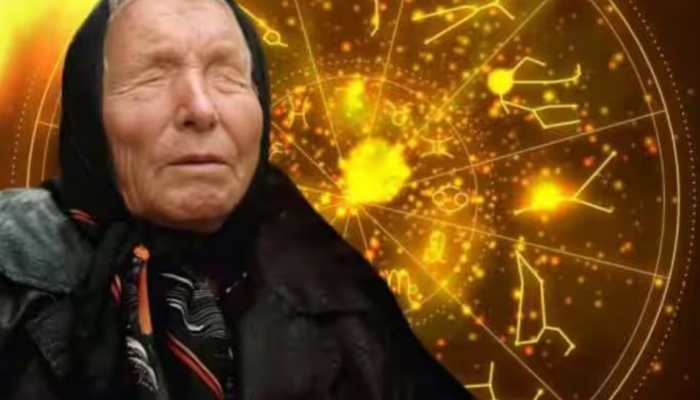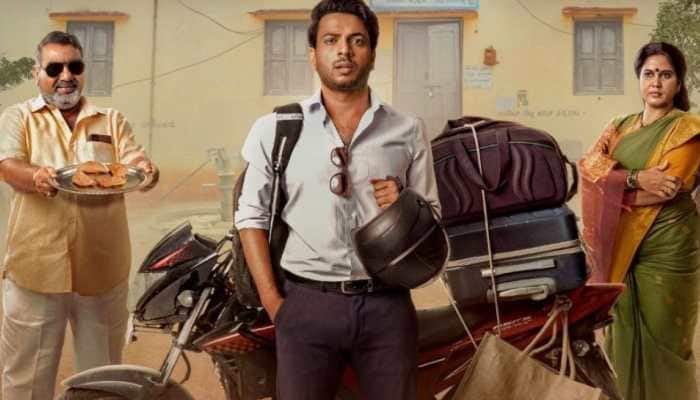The Literary Express: How trains carried forward
Trending Photos
) Pic Courtesy: ThinkStock images (For representational purpose only)
Pic Courtesy: ThinkStock images (For representational purpose only) Among forms of transport as settings for stories, trains seem the most popular. Rail travel may not have the speed or 'glamour' of air travel, or the well-heeled ambience of, say, a cruise ship, but still has its own charm and mystique that lends itself well to stories. And some famous authors, from Agatha Christie to Ian Fleming, Graham Greene to J.K. Rowling and Khushwant Singh to Satyajit Ray used it to great effect.
And in trains, the sense of being in a sort of separate universe while not dislocated from the world we inhabit, unlike in air or sea journeys, contributes to its allure. It also makes for some perplexing mysteries or insidious dangers while the train is in motion.
Among the earliest mention of trains in major literary works may be Lewis Caroll's "Through the Looking-Glass..." (1871), the sequel of "Alice in Wonderland", where Alice, playing a gigantic game of chess in a pawn's role, begins her journey by boarding a train where she meets an assortment of strange creatures. Meanwhile, Phineas Fogg, in his circumnavigation of the world (in Jules Verne's "Around the World in Eighty Days", 1873) begins and ends his journey on trains, and also depends on them to carry him across India (from Bombay to Calcutta), and the US (from San Francisco to New York). And Leo Tolstoy's "Anna Karenina" (1877) has a crucial episode at a station.
Sherlock Holmes made extensive use of trains but none of the mysteries he solved happened on them, save to some extent "The Adventure of the Bruce-Partington Plans", where a murder victim is found on railway tracks. However, his creator, Sir Arthur Conan Doyle, wrote two stories with railway themes - "The Lost Special" (1898) in which a whole train disappears and in "The Man with the Watches"(1898), where a man is found dead in a railway carriage with no identification but half a dozen timepieces.
No mention of railways in literature can be complete without the legendary Orient Express, which began its Paris-Istanbul service in 1883 and exemplified luxury and comfort at a time when travelling was still rough and dangerous.Though operations stopped during the World Wars and the Istanbul terminus was dropped in 1977 (the truncated service itself ended in 2009), the train, which, in its heyday had three parallel routes across Europe, was the most celebrated way of traversing the continent. And it got its due.
Dr. Van Helsing and his associates take it in their chase of Dracula back to his Transylvanian lair, and while Agatha Christie pits Poirot to solve a particularly singular killing in "Murder on the Orient Express" (1934) on the Istanbul to Paris trip, more mysterious is her Parker Pyne short story "Have You Got Everything You Want?" (1933).
Then, that old reprobate Sir Harry Flashman, riding on the train's inaugural trip, gets blackmailed into high-level intrigue (George MacDonald Fraser's "Flashman and the Tiger", 1999), the fates of a Jewish businessman, a chorus girl, a communist leader returning home to danger, and a lesbian journalist with an eye on a scoop entwine in Graham Greene's "Stamboul Train" (1932) while James Bond, fleeing with defecting Soviet cipher clerk Tatiana Romanova, faces several harrowing moments on board in Ian Fleming's "From Russia to Love" (1957). (Much interested in trains, Fleming also included them in "Live and Let Die", "Diamonds Are Forever" and The Man with the Golden Gun").
While it doesn't mention the train it is set on, Ethel Lina White's 1936 novel "The Wheel Spins" (or "The Lady Vanishes" as it is better known due to the three film adaptations) is the chilling story of a heroine befriending a woman on a train but after waking from sleep, finding her missing while all the other passengers deny her very existence. Equally chilling is Patricia Highsmith's "Strangers on a Train" (1950) with its unique "murder" pact.
And then, where would Harry Potter be without the Hogwarts Express?
At home, possibly the first prominent work where trains feature is Khushwant Singh's first novel "Train to Pakistan" (1956) which uses them skillfully to depict the Partition's senseless violence as does Bhisham Sahni's short story "We Have Arrived in Amritsar". Then, Satyajit Ray's "Barin Bhowmik's Ailment" has a train encounter with a twist but more eerie is the one (I forget the name) where a traveller finds his co-passenger investigating a ghostly phenomenon and agrees to join him on one of his trips.
But, despite their popularity (now Metro railways too), the railways are yet to get their due from Indian authors - this is one feasible track still underutilised.
Stay informed on all the latest news, real-time breaking news updates, and follow all the important headlines in india news and world News on Zee News.
Advertisement
Live Tv
Advertisement







)
)
)
)
)
)
)
)
)
)
